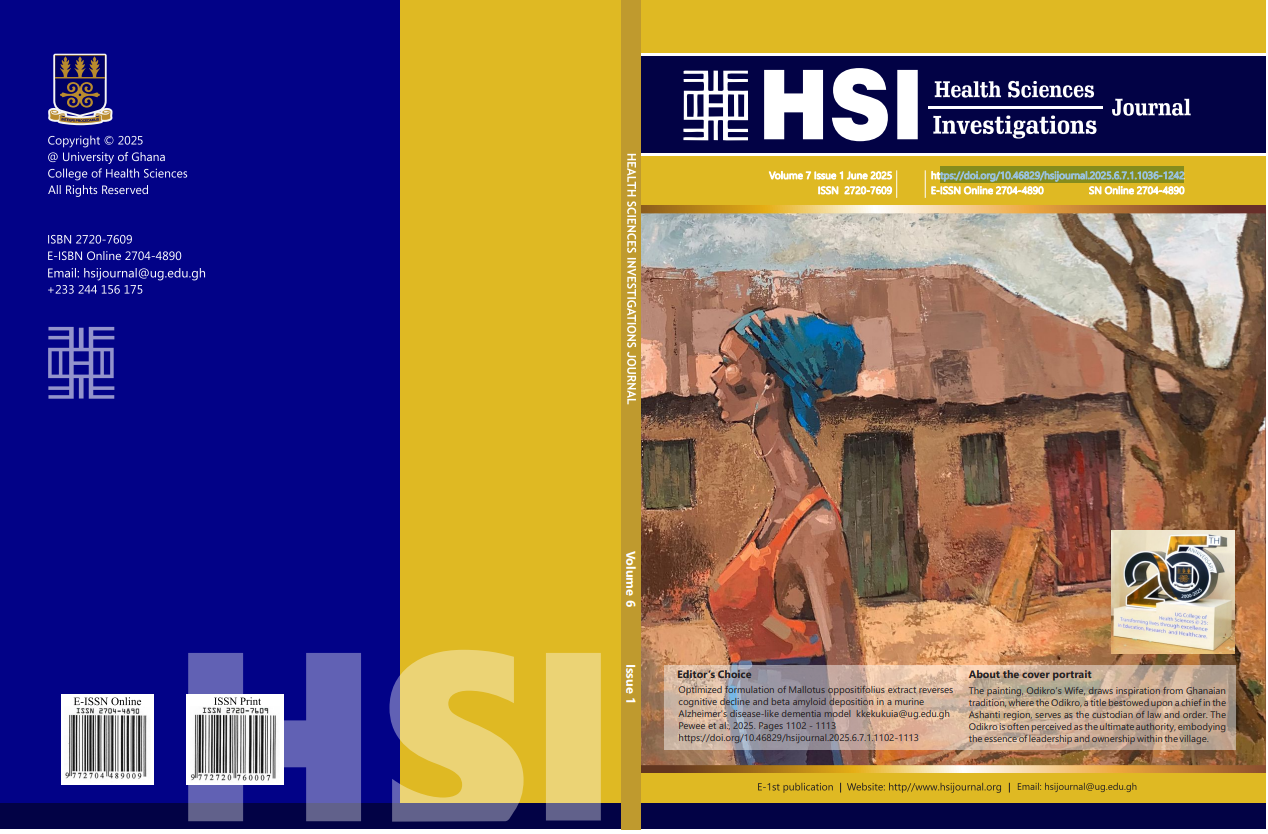Optimised formulation of Mallotus oppositifolius extract reverses cognitive decline and beta-amyloid deposition in a murine Alzheimer’s disease-like dementia model
Optimized formulation of Mallotus oppositifolius extract reverses cognitive decline
Abstract
Background: Mallotus oppositifolius leaf extract (MOE) has potential neuroprotective effects, but no scientific investigation validates its use in mouse models of Alzheimer’s disease (AD).
Objective: The study evaluated the effects of an optimised formulation of MOE in aluminium chloride (AlCl3)-induced AD-like dementia.
Methods: Mice were randomly assigned to 6 groups (n = 10), and AD was induced in groups 2-6 using AlCl3 (175 mg/kg), with group 1 representing the negative control. Optimised formulation of MOE (10, 30 and 100 mg) was administered orally to groups 3, 4 and 5, respectively, while group 2 represented the disease control. The Morris water maze (MWM) test was used to assess cognitive impairment, and the open-field test (OFT) for locomotor and anxiety behaviour. Biochemical and histological changes were also assessed.
Results: AlCl3 caused significant memory and learning disruption in the MWM test, but MOE formulation (10, 30, and 100 mg/kg) reversed these deficits. MOE formulation attenuated the reduction in both locomotion and time spent in the centre of the OFT in comparison to the AlCl3-diseased untreated group. Brain superoxide dismutase (SOD) content was significantly increased while brain and serum malondialdehyde (MDA), as well as acetylcholinesterase (AChE), were reduced by the formulation treatment when compared to the AlCl3 diseased untreated group. The administration of MOE formulation (30 and 100 mg/kg) resulted in a significant reduction in brain concentrations of IL-1β, IL-6, and TNF-α and a significant decrease in serum IL-6 and TNF-α concentrations when compared to the AlCl3 diseased untreated group. Congo red-stained hippocampus CA1 showed that the formulation (30 and 100 mg/kg) significantly decreased amyloid deposition in comparison to the AlCl3-diseased untreated group.
Conclusion: This study reports that an optimised formulation of MOE improves learning and memory, attenuates anxiety, and reduces pro inflammatory cytokines and oxidative stress associated with AD-like dementia. The formulation also ameliorates amyloid deposition.


